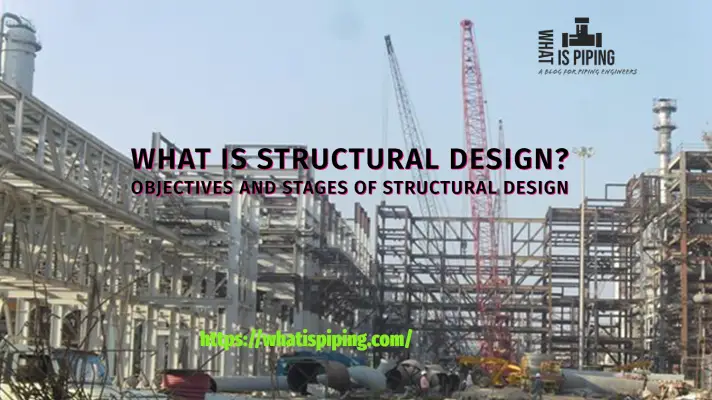The term “Brownfield vs. Greenfield” is frequently heard during project execution. This is a very meaningful term for the oil & gas industry. But, the term greenfield vs brownfield is not only related to oil & gas industries but is widely used in many industries like IT, Construction, Manufacturing, Building Services, etc. Overall, both these terms are related to any kind of project. In this article, we will find out more about Brownfield and Greenfield and their differences.
What is a Brownfield Project?
Brownfield projects are projects where some work has already been made. The site is already partly developed with the required infrastructure. From that point onwards, new developments will be started. Considering Oil & Gas, new expansion projects, revamp projects, yield improvement projects, redevelopment or enhancement of existing oil and gas facilities or fields, etc. come under brownfield projects. These sites may have a legacy of production, but they can also present challenges such as contamination, aging infrastructure, and regulatory hurdles.
Key Characteristics of Brownfield Projects:
- Existing Infrastructure: Brownfield projects leverage existing drilling platforms, pipelines, refineries, and other facilities, which can reduce initial capital expenditures.
- Environmental Concerns: Many brownfield sites may have residual contamination from previous operations, necessitating thorough environmental assessments and remediation efforts.
- Regulatory Oversight: Brownfield developments often face stringent regulations regarding environmental safety, requiring compliance with cleanup standards set by government agencies.
What is a Greenfield Project?
A greenfield project starts from scratch. The site is not developed, and the required infrastructure for the project is normally not present. So a greenfield project starts afresh from scratch. For oil and gas, completely new projects in undeveloped places, like new refinery construction, new drilling locations, setting up of a chemical or petrochemical plant, etc. fall under greenfield projects.
Key Characteristics of Greenfield Projects:
- Untapped Resources: Greenfield projects offer the potential for exploring new reserves, making them attractive for companies seeking to expand their resource base.
- Modern Design Opportunities: Developers can implement the latest technologies and sustainable practices from the outset, leading to more efficient and environmentally friendly operations.
- Regulatory Framework: Although greenfield projects still require permits and approvals, they generally face fewer legacy regulatory challenges compared to brownfield sites.
Examples of Brownfield and Greenfield Project Concepts
The above concept can be clearly understood from the following examples:
- For the software industry, updating an existing application to add some new capabilities can be considered a brownfield. However, creating a completely new application is considered greenfield.
- For the Real estate sector, constructing a new tower in an already developed society complex is considered a brownfield whereas constructing a completely new society complex is a greenfield project.
- For a chemical plant, modification of the plant to increase productivity is considered a brownfield whereas constructing a new chemical plant is a greenfield project.
Differences between Brownfield and Greenfield Projects in the Oil and Gas Sector
From the above definitions and examples, it is clear that both brownfield and greenfield are completely different concepts. The major differences, subject to some basic parameters, are listed below:

1. Brownfield vs Greenfield: Economic Consideration
From the economic point of view, as brownfield projects are normally small-sized, total initial money involvement is comparatively smaller. While brownfield projects can benefit from existing infrastructure that may reduce initial costs, they often incur additional expenses related to environmental cleanup and compliance. The complexity of these projects can lead to unpredictable costs and delays
On the other hand, greenfield projects are large projects, and starting from scratch, the initial project cost is larger. They may require significant upfront investment to establish new infrastructure, but they avoid the complications associated with remediation. The potential for modern, efficient designs can also lead to lower operational costs in the long run.
2. Greenfield vs BrownField: Space Constraint
Considering refinery projects, in brownfield projects space is limited so each element, piping, equipment, and structure need to be minutely checked and placed. Also, because of limited space pipe routing becomes critical as the designer has to use the available space only considering all construction activities as larger construction equipment may not be accessible. Also, there is limited storage space and parking space for project requirements.
On the other hand for new projects, there is much flexibility in design as the initial complete area is empty. So locating equipment and pipe routing becomes much easier. Also, better planning and optimization are possible in greenfield projects.
3. Brownfield vs Greenfield: Infrastructure Requirement
As brownfield projects are normally expansions or improvements of existing projects, the required infrastructure is available. It’s easy to arrange labor in already-developed places. Places are easily accessible for deliveries. Earlier design data, soil reports, etc are easily available.
Greenfield projects are new projects, and most of the time in undeveloped places, required infrastructure needs to be created during the project run which will impact the project schedule and deliveries.
4. Environmental Management
Brownfield: Environmental challenges are a significant concern for brownfield projects. Some sites may require extensive remediation to address soil and groundwater contamination. This process can be time-consuming and costly, affecting the overall project timeline and budget.
Greenfield: Greenfield projects typically start with clean land, allowing for straightforward environmental assessments. However, developers must still consider potential impacts on local ecosystems and biodiversity.
5. Regulatory Complexity
Brownfield: The regulatory landscape for brownfield projects is often intricate, with multiple agencies involved in overseeing remediation efforts and ensuring compliance with environmental laws. Navigating these regulations can be a major hurdle for developers.
Greenfield: While greenfield projects must comply with environmental regulations, they often face fewer historical constraints. However, companies must still engage in comprehensive planning to meet local zoning and environmental standards.
6. Community Impact and Stakeholder Engagement
Brownfield: Redeveloping brownfield sites often involves significant community engagement due to the historical impact of previous operations. Stakeholders, including local residents and environmental groups, may have concerns about contamination and the potential for gentrification.
Greenfield: Greenfield projects may face community opposition due to concerns about land use, environmental disruption, and impacts on local wildlife. Effective stakeholder engagement is crucial to addressing these concerns and fostering community support.
7. Strategic Opportunities
Brownfield: For oil and gas companies, brownfield projects can be strategically beneficial as they can often tap into remaining reserves in mature fields. Enhanced oil recovery techniques can be employed to maximize extraction from existing wells.
Greenfield: Greenfield projects represent opportunities for innovation and expansion into new markets. They allow companies to explore previously untapped reserves and implement cutting-edge technology from the start.
8. Greenfield vs Brownfield: Other differences
Other major differences between brownfield and greenfield are tabulated below:
| Brownfield Project | Greenfield Project |
| Brownfield projects have limited space and difficulty in further future development. Even finding the required plot size could be difficult. | Greenfield projects have ample space, and future expansion is possible. |
| Easy accommodation for crew members as in the brownfield project they are already built. | Accommodation in greenfield projects could be difficult, so it must be built beforehand. |
| Brownfield projects get easy access to local suppliers | On the contrary, greenfield projects have limited local suppliers in undeveloped locations. |
| Demolition requirements in brownfield projects can increase the project cost. | Greenfield projects are completely new, so no demolition requirement. |
| Normally there are no governmental restrictions. However, they may be subject to strict regulations for remediation and safety. | There could be governmental restrictions if deforestation or similar environmental issues arise. They usually face fewer legacy regulations but still require permits. |
| Local interference can delay projects. | There is no chance of local interference as greenfield plots are usually new and in undeveloped places. |
| Brownfield development localizes communities in a limited congested region. | Developing greenfield sites reduces traffic and congestion with a more pleasant environment. |
| Risk factors in brownfield projects are high due to environmental liabilities and public scrutiny. | Lower risks in terms of legacy issues but still subject to market fluctuations. |
| The innovation potential is usually limited by existing infrastructure and past practices | High potential for innovation and sustainable practices in greenfield oil and gas projects. |
How to Choose between Greenfield and Brownfield Oil and Gas Project
Choosing between a greenfield and a brownfield oil and gas project involves careful consideration of various factors. Here’s a guide to help you make an informed decision:
1. Resource Availability
- Greenfield: Assess the potential for untapped reserves in new locations. Consider geological surveys and exploration data.
- Brownfield: Evaluate the remaining reserves in existing fields and the potential for enhanced oil recovery (EOR) techniques.
2. Cost Analysis
- Greenfield: Estimate the total investment required for new infrastructure, including drilling, transportation, and processing facilities.
- Brownfield: Calculate the costs associated with remediation and compliance with environmental regulations, alongside infrastructure upgrades.
3. Environmental Considerations
- Greenfield: Conduct environmental impact assessments to understand the potential effects on ecosystems and local communities.
- Brownfield: Evaluate the extent of contamination and the necessary remediation efforts to meet regulatory standards.
4. Regulatory Environment
- Greenfield: Research zoning laws, permitting processes, and environmental regulations for new developments.
- Brownfield: Understand the legal complexities and compliance requirements related to the cleanup of contaminated sites.
5. Market Demand and Economic Factors
- Assess the current and projected demand for oil and gas products. Consider how each project aligns with market trends and pricing fluctuations.
6. Timeline and Feasibility
- Greenfield: Evaluate the projected timeline for development, including exploration and construction phases.
- Brownfield: Consider potential delays due to remediation efforts and regulatory approvals.
7. Community Engagement
- Greenfield: Prepare for potential community opposition. Engage with local stakeholders early in the process to address concerns.
- Brownfield: Involve the community in discussions about the benefits of revitalizing contaminated sites and ensuring safety.
8. Technological Considerations
- Greenfield: Leverage modern technologies for exploration and extraction to enhance efficiency and reduce environmental impact.
- Brownfield: Assess the potential for upgrading existing technologies to improve recovery rates and reduce operational costs.
9. Risk Assessment
- Analyze risks associated with each type of project, including financial, operational, environmental, and reputational risks.
10. Long-Term Sustainability Goals
- Consider how each project aligns with your company’s sustainability objectives. Greenfield projects may allow for the incorporation of sustainable practices from the outset, while brownfield projects can contribute to urban revitalization and pollution reduction.
The decision between a greenfield and a brownfield project in the oil and gas industry requires a comprehensive evaluation of resources, costs, environmental impacts, regulatory frameworks, community considerations, and long-term goals. Engaging with stakeholders and conducting thorough feasibility studies can help ensure that the chosen path aligns with both business objectives and responsible development practices.
To conclude, in the oil and gas industry, the choice between brownfield and greenfield projects involves a complex interplay of environmental, regulatory, financial, and community considerations. Brownfield projects can revitalize existing sites and maximize resource extraction but come with significant challenges related to contamination and regulatory compliance. Greenfield projects offer the opportunity for innovation and exploration but require substantial investment and careful community engagement.
Ultimately, the decision will depend on the specific context of the project, including resource availability, regulatory environments, and strategic goals.









Thanks for the excellent post. I was looking for some clear explanation about it until I found it here.
Thank you so much for the knowledge👂🏼👂🏼
As I am a fresher there is more difficult to get job every company wants a experience candidate so share something that can help fresher
Articulation defined so well that a lay man can understand the difference between both the term.
Thanks
I would like to say the same wording as per Osvaldo Romero. Thank you very much Mr. Anup Kumar Dey.
Thanks for sharing. Very well put